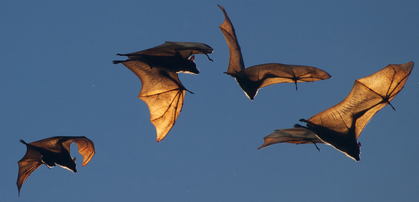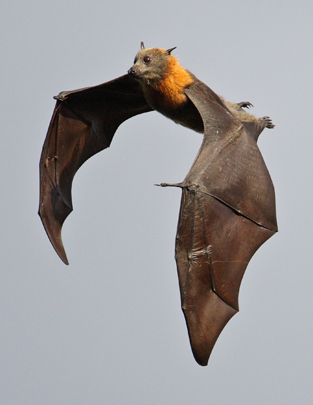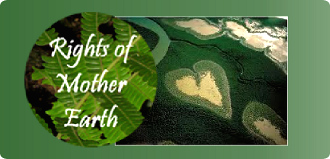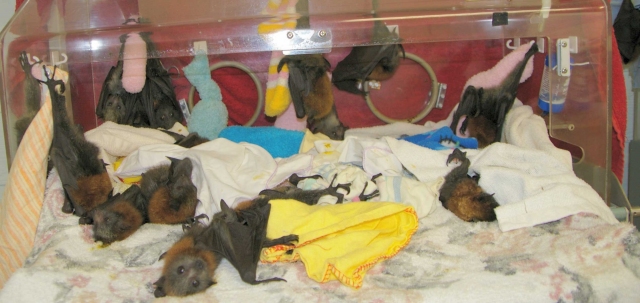
Logan and Albert Conservation Association

Environmental Submission writing kit for the Draft Logan Planning Scheme
due: deadline 5 pm Wednesday 30 April
Logan and Albert Conservation Association have 5 key concerns relating to the strategic planning that underlies the planning documents. We have explained the background behind each concern and make a recommendation for how those values - which are core values for our organisation - could be improved. Please read the following document to read all 5 points. The first 3 points are covered in the pdf document lower down the page. Regional biodiversity corridors and Priority Development Areas (PDAs) are the last 2 points added.
Planning_Scheme_Environmental_Submission_writing_kit.5points_docx.pdf
Do not include attachments (which would have to be digitally signed) unless you need to
Submissions must be properly-made for Council to consider your feedback. A properly made submission means:
• You must include the full name and address of each person making the submission
• Submissions must state the grounds for the submission and the facts or circumstances to support the grounds. See text in red below
Apart from email submissions (preferred) written submissions - posted letters or email attachments, but NOT emails, must be signed by each person making the submission
So the simplest and best option for submissions is to direct email This email address is being protected from spambots. You need JavaScript enabled to view it.
Submissions can also be made Via post to Logan City Council, PO Box 3226, Logan City DC, Qld 4114, but have to arrive by 5 pm Wednesday 30 April
Significant environmental concerns to comment on include
Koala mapping not included as statutory overlay in Draft Planning Scheme
Offsetting and the Council’s flawed Ecological Significance scoring
Limited locally significant flora and fauna mapping
Background information for each is provided to explain why Logan and Albert Conservation LACA and others are concerned.
1. Koala mapping not included as statutory overlay in Draft Planning Scheme
Background: While out of date mapping of Koala habitat does appear in the Draft Planning Scheme, this is not legally supported mapping (ie not statutory) and therefore has little chance of being defended in a court challenge.
Here you find an example of what you can write:
In your email submission, you could copy and paste the text in red below the background, or say the same things in your own words.
Make sure you include the second part - ‘My proposed change to the Draft Logan Planning Scheme’
It is important that you make a submission to protect the biodiversity of our region - the flora and fauna - endangered threatened rare and common that together with our waterways make SOUTH EAST QUEENSLAND the special ecological region that it is.

The sensational language and looseness of facts seen in most media encourages that fear. We need to respect all species and appreciate that humans are not the prey.
Man's wellbeing depends on having a healthy and respectful relationship with all species whose habitat we share. That may be sharks in the ocean, dingoes on Frazer Island, flying foxes in local trees and forests, bees pollinating fruit and flowers, our domesticated dogs sharing our homes and neighbourhoods, and the many microbes which live inside the human body.
Queensland is currently suffering legalized shooting of flying foxes - when done humanely? How inane it to believe or accept that shooting is not cruel. Throughout Queensland and globally many groups have called for all political parties to commit to protecting our flying foxes. Read the statement here.
An Australian study has shown that most bats shot don't die immediately. The majority take hours and sometimes days to die. During that time they are in severe pain due to the damage inflicted by the shotgun pellets. Dependent young will also die slowly of starvation over the next few days. Download PDF. NSW and Qld legislation says that causing an animal to die in pain, or in a way that is not quick, is animal cruelty, yet both states still issue permits that allow these bats to be shot.
Do you want to protest this and other animal cruelty? Click on image above for a template to make a grey cross. Read about the campaign and participate however you can. Details at this website http://www.thegreycross.org/index.html.
Are there alternative methods for farmers to protect fruit crops?
According to a member of the Australian Custard Apple Growers Association, appropriate netting was both cost and profit effective. No harm is done to bats, birds or possums. Read the profitabilty and best practice report here.
Share your comments, photos, ideas via social media at https://www.facebook.com/DontShootBats and any others you use. Contact the campaign team http://www.thegreycross.org/contact-us.html
Interesting that EHP department publishes information about the importance of flying foxes eg Flying-foxes are crucial to keeping native forests healthy

Queensland Bat Advocacy and campaign group Don't Shoot Bats certainly does not. Speaking for the Don't Shoot Bats campaign, Dr Carol Booth condemned the move as retrograde, anti-conservation and cruel and remarked on the irony of releasing the statement on National Threatened Species Day. Grey-headed and Spectacled flying-foxes are listed as vulnerable under national environmental laws.
LACA cannot agree when the Environment Minister says he is taking a 'balanced' approach. Species are listed as threatened when their future is in the balance, so what is balanced about shooting them? There is nothing balanced about sanctioned cruelty.
Great suffering will result from the re-introduction of shooting: it is inevitable that some of those shot will die slowly of their wounds, and young deprived of their mothers will die of thirst or starvation.
Fruit growers have cost-effective alternative methods of crop protection. Most do the right thing and protect their crop by nets and other non-lethal means. It should be expected of all.
Just three months ago the Queensland Agriculture Minister said 'It's important every Queenslander understands animal cruelty is never acceptable.' See his statement here.
Read Shooting threatened flying-foxes legalised on Threatened Species Day media release here.
, Policies and Campaigns Manager, Wildlife Queensland reports that shooting has been demonstrated to be ineffective and Horticultural experts advise that netting is the only effective method to prevent significant economic loss.
"Killing listed species, particularly when population numbers are not known with any certainty, is a major concern. Where will it stop? What will be next?" Read Wildlife Queensland here
You can help by completing online survey and writing to your local council and state representative.
We can also become more informed of issues relating to threatened species.
 This is an opportunity to comment. Will there be a measurable increase with culling policies for fruit growers now introduced.
This is an opportunity to comment. Will there be a measurable increase with culling policies for fruit growers now introduced.
Click on image to left to complete survey online or phone 132523
Biosecurity Queensland is calling on members of the general public to participate in an online survey about flying foxes. The survey aims to gain a better understanding of public opinions, attitudes and knowledge of flying foxes and possible flying fox management options.
Due to the number of Hendra virus incidents in recent years, some communities have become more aware of the presence of flying foxes and the viruses that can be carried by these animals.
In areas where dispersal of flying foxes has either been proposed or has occurred, there has also been some concern about possible increased virus excretion from flying foxes as a result of dispersal.
Survey link from this page and research link here
Hendra virus - the facts is a balanced report from tourism interests in Port Douglas
This factsheet from CAIRNS REGIONAL COUNCIL is also very informative and busts 10 BAT MYTHS
 The announcement on Threatened Species Day of a permit to kill flying-foxes is not well received by concerned wildlife groups and animal welfare groups. It is unbelievable spin by Environment Minister Andrew Powell that "This is about giving greater control to farmers over managing their crops while striking a balance with animal welfare and conservation."
The announcement on Threatened Species Day of a permit to kill flying-foxes is not well received by concerned wildlife groups and animal welfare groups. It is unbelievable spin by Environment Minister Andrew Powell that "This is about giving greater control to farmers over managing their crops while striking a balance with animal welfare and conservation."
Humane shooting [at night], agreed limits with quotas per species, no impact on the long term survival of the four flying-fox species, DMPs only issued as an absolute last resort.
The Australasian Bat Society (ABS) condemned the move, saying that it is worrying that native species can be considered as pests and subjected to inhumane methods for control. The ABS does not support the shooting of flying foxes in any situation.
Dr Booth, a biologist from the Don't Shoot the Bats Campaign, says flying foxes are nocturnal feeders and most shootings are likely to occur at night. You can't patrol an entire orchard all night with a shotgun. Proper netting, with tiny holes, is a much more humane and far cheaper solution.
The correct netting is essential as many flying foxes die an agonising death trapped in loosely draped black throw-over netting . There were more than a million gray-headed flying foxes on the east coast last century but numbers had fallen to about 300,000.
Each bat spreads 60,000 to 90,000 seeds in our national forests so without these guys our forests are in big trouble.
Read about importance of flying-foxes here and damage mitigation permits here both on EHP WEBSITE.
Fruit growers may be happy but non compliance of any policy is usually up to community being the watchdog. The future of our flying-foxes and forests they pollinate are now in jeopardy.
According to Minister Powell these new laws have been developed with input from growers, conservationists and animal welfare advocates and he is confident they've got the balance right. this writer is very sceptical of that spin.
Learn more abouts bats at Australasian Bat Society and their facebook page
 At times we humans feel threatened by some of our native animals and call for government to protect us from these creatures we cannot control. What can we control? Animals that are vulnerable to our physical strength suffer many inhumanities - based on inherited practices. Since 2008 laws in Queensland have protected threatened flying-foxes from being shot and electrocuted, requiring farmers to use non-lethal methods, such as netting, to protect their crops. But the Liberal National Party have said that if elected they will overturn these laws. This backwards step in animal protection may once again mean flying-foxes can be shot and electrocuted, causing widespread suffering and further threatening this dwindling species' numbers. Katter's Australia Party have also made some worrying statements about animal welfare.
At times we humans feel threatened by some of our native animals and call for government to protect us from these creatures we cannot control. What can we control? Animals that are vulnerable to our physical strength suffer many inhumanities - based on inherited practices. Since 2008 laws in Queensland have protected threatened flying-foxes from being shot and electrocuted, requiring farmers to use non-lethal methods, such as netting, to protect their crops. But the Liberal National Party have said that if elected they will overturn these laws. This backwards step in animal protection may once again mean flying-foxes can be shot and electrocuted, causing widespread suffering and further threatening this dwindling species' numbers. Katter's Australia Party have also made some worrying statements about animal welfare.
Inhumane practices extend to our companion animals and livestock that provide food. Life in the fast lane has distanced us fron nature - its ambience and tranquility, its free ecosystems sevices such as clean air, clean water, pollination of plants for beauty and food. A life of convenience comfort and pleasure - bought as cheaply as possible - is expected now by many.
2012 - the year of RIO+20 is a time for reflection of our values aspirations vision for the future - a sustainable future for both the human species and all other interdependant life. This global summit needs to matched at our own local and regional levels as we go about our daily lives - respecting and valuing all forms of life - biodiversity.
Admittedly some folk feel a colony of flying foxes may be noisy and somewhat messy, but others value the services provided - from pollinating our eucalypt trees to devouring thousands of small insects. We can not duplicate those services. Imagine an Australia without gum trees!
Fear of death from Hendra virus has been dramatised in the media and demonised the flying fox. In reality there are far greater hazards we contend with on a daily basis. In most instances managing our own human behaviours can reduce risks.
Our ever growing human population is placing a heavy burden on the world's resources. In Australia we have a species extinction rate which is embarrassing. Becoming well informed conscious consumers is everyone's responsibility. Learning to live lightly on the planet can only help to preserve its biodiversity.
 Headlines and articles in papers almost always report our human fear of the flying fox or fruit bat - our important pollinator for gums and rainforests. The emotive language used in a recent post The battle brewing over bats, the pariah of Australian wildlife does little to settle fears.
Headlines and articles in papers almost always report our human fear of the flying fox or fruit bat - our important pollinator for gums and rainforests. The emotive language used in a recent post The battle brewing over bats, the pariah of Australian wildlife does little to settle fears.
The fear of bats is being exploited by many press. Death directly related to flying foxes is minimal - 6 since 1994 while more than 30000 children die daily from polluted water supplies. More horses have died from other causes eg culling and toxic weeds in the paddock than have died from Hendra. Understanding the ecology of natural systems and the interaction of all the biodiversity interacting together - biodiversity infrastructure - is critical to our human survival on the planet.
TEEB The Economics of Ecoysytems and Biodiversity a tool which places a monetary value on the services and goods that nature provides humans on a global scale. Yet we fail to consider these seriously when politicans and planners make decisions about human settlement and our creature comforts. We have cleared great swathes of land that would have provided habitat. The value of these services are being considered internationally - but not locally or at state level.
Elsewhere in the world urban dwellers are learning to live with brown bears and understand that what we do can attract them and also distract them away.
 Baby bats in care are raised in a nursery situation and are cute and cuddly - if you've been vaccinated. Dogs with rabies is a health threat currently in Bali but travellers take the precaution of vaccination.
Baby bats in care are raised in a nursery situation and are cute and cuddly - if you've been vaccinated. Dogs with rabies is a health threat currently in Bali but travellers take the precaution of vaccination.
Learning to live with our native species - our wildlife - is critical for our human wellbeing on our one planet. Drastic actions to interfer with the ecology of other species may bring about unwanted and unplanned reactions.
The folk at Gayndah may have displaced some species of flying fox - or did they move of their own accord? I believe the black flying fox is now looking for a roost in the area.
Teaching with cruelty and fear is a method many of us have discarded. Respect for all species and their niche in the global system is long overdue.
 The Queensland Government is running an online discussion forum on Friday 23 September from 12 pm to 1.30 pm. The forum, titled
The Queensland Government is running an online discussion forum on Friday 23 September from 12 pm to 1.30 pm. The forum, titled
'Flying foxes, your animals and you', will be streamed live online on the flying foxes and Hendra virus online information session page and on the
Biosecurity Queensland Facebook page.
Watch a panel of experts address the myths and clarify the facts around flying foxes and Hendra virus.
Submit a question for the expert panel or find out more information from the flying foxes and Hendra virus online information session
Avoiding Hendra is easier than killing bats and pending release of a vaccine against Hendra virus, managing the immediate risk to horses and humans is simple – follow simple hygiene and feed management practices that reduce horse and horse feed exposure to bats and their excretions. Hendra virus is a zoonotic disease, which means it can transfer from animals to people. Hendra virus can cause disease in horses but only rarely causes disease in humans. See links to detailed information about Hendra virus from QG DPI website
The panel experts coming together to answer your questions are:
Mr Clive Cook, General Manager, Department of Environment and Resource Management
Dr Michael Cleary, Queensland Health's Acting Chief Health Officer
Dr Rick Symons, Biosecurity Queensland's Chief Veterinary Officer
Dr Hume Field, Biosecurity Queensland's Principal Scientist
If you have an urgent enquiry or suspect a possible Hendra case, notify Biosecurity Queensland on 13 25 23 (business hours) or
the Emergency Animal Disease Watch Hotline on 1800 675 888 24 hour hotline
2010 SPOTLIGHT ON WILDLIFE IN SCENIC RIM - series of community workshops sponsored by SRRC
 To help celebrate the 2010 United Nations International year of Biodiversity , the Logan and Albert Conservation Association will be hosting a series of free public workshops entitled 'Spotlight on Wildlife in the Scenic Rim'. The workshops have been funded through a Community Environment Assistance Grant from the Scenic Rim Regional Council.
To help celebrate the 2010 United Nations International year of Biodiversity , the Logan and Albert Conservation Association will be hosting a series of free public workshops entitled 'Spotlight on Wildlife in the Scenic Rim'. The workshops have been funded through a Community Environment Assistance Grant from the Scenic Rim Regional Council.
The first 2010 WORKSHOP will be held in Canungra where there is a significant colony of bats and where recently there was a crisis to save the babies after a storm devestated their usual bat family nursery habitat. The workshop will help us all to become more aware of the signifigant contributions this family of flying marsupials makes to our shared environment and how we can all live safely and harmoniously together.
The Canungra workshop will include guest speakers Louise Saunders from Bat Care Brisbane Inc, Janet Gamble from the wildlife section of the RSPCA and local zoologist Ronda Green.
 Professor Jonathan Hill, the head of the school of Veterinary Science at the University of Queensland, says once a Hendra virus quarantine has been lifted, any concern about any of the horses on property where Hendra virus had been is misplaced. It is indeed uncessary misfortune to have sound horses devalued as a result of exposure. When people who contact or walk into infectious diseases and don't get the disease, we know that they are not infected. Professor Jonathan Hill says the horses are not damaged goods just because they have been on a stud which had horses that had Hendra virus. In fact you could say that they have been tested to be 100 per cent certain of being clear, which puts them in a unique spot.
Professor Jonathan Hill, the head of the school of Veterinary Science at the University of Queensland, says once a Hendra virus quarantine has been lifted, any concern about any of the horses on property where Hendra virus had been is misplaced. It is indeed uncessary misfortune to have sound horses devalued as a result of exposure. When people who contact or walk into infectious diseases and don't get the disease, we know that they are not infected. Professor Jonathan Hill says the horses are not damaged goods just because they have been on a stud which had horses that had Hendra virus. In fact you could say that they have been tested to be 100 per cent certain of being clear, which puts them in a unique spot.
Professor Hill says such misconceptions stem from a lack of knowledge about Hendra virus, which need to be addressed with research.